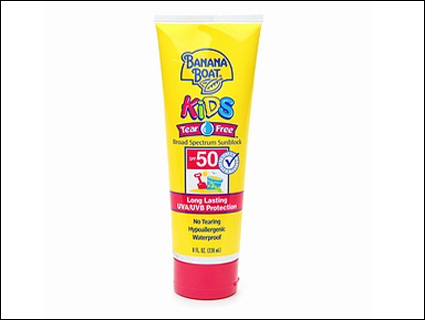
<a href="http://www.flickr.com/photos/izzyplante/5389309312/sizes/z/in/photostream/" target="_blank">izzyplante</a>/Flickr
If you’ve been following the epic saga of the FDA’s long-awaited sunscreen regulations, you probably won’t be surprised to hear that the agency has pushed back enforcement of its latest set of rules from this summer to mid-December of this year. The rules—you know, someday—will bar manufacturers from making outlandish claims on their labels (no more SPF 150). But that’s not all. Last year, MoJo‘s Jen Quraishi summarized the regulations in a blog post:
–all sunscreens must be SPF 15 or higher if they claim to prevent sunburn, early aging, and reduce skin cancer risk. Anything under SPF 15 could only be advertised to help prevent sunburn.
–all sunscreens must provide protection against both ultraviolet B radiation (UVB) and ultraviolet A radiation (UVA) in order to be labeled as “Broad Spectrum.”
–no more labels that market a sunscreen as either “waterproof” or “sweatproof.” The label “sunblock” is also disallowed.
–any product that claims water resistance must also tell consumers how much time they can expect to get SPF protection for while in the water.
–no product can claim to offer immediate protection after application unless they submit data to the FDA and get the FDA’s express approval
–sunscreens in the form of wipes, towelettes, powders, body washes, and shampoo cannot be marketed without approved application.
All of which would be a step in the right direction. But as Environmental Working Group pointed out, the new rules continue “to allow oxybenzone, retinyl palmitate and several other ingredients in sunscreens despite scientists’ concerns about their toxicity.”












